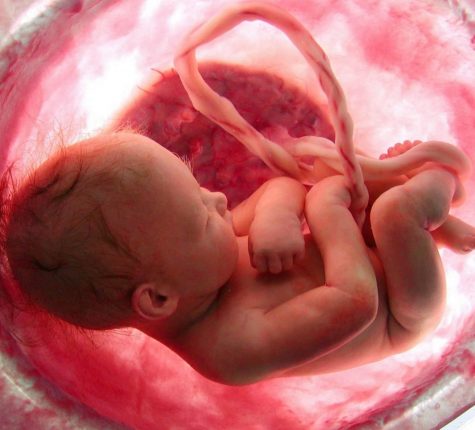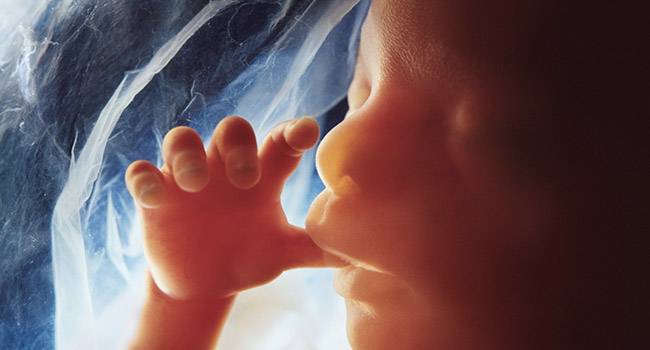Right to Choose Versus The Right to Life
The right to choose versus the right to life has been a raging debate for years, seemingly tearing the nation in two. However, the argument is neither a political nor a religious one, and, as a nation, to find any kind of middle ground, we must first understand what constitutes a human being according to embryologists. The objective scientific facts of the matter, when used in abortion debates, can ground these discussions and help Americans evolve an educated response. In the end, the overall science, statistics, and constitutional rights prove for themselves the argument that abortions should be limited in the US today.
The most crucial part in formulating our stances on abortion comes with basic human embryology facts. The most commonly misunderstood and false claims made surrounding abortion come with the question of when human life begins. A research study from Princeton University collected direct quotes and references from some of the most highly respected human embryology textbooks and represent a consensus of human embryologists internationally. The study begins by explaining a major occurrence in the process of gametogenesis and fertilization and the role they both play within one another. Sperm cells and oocyte (ovum or egg), are both characterized by a special number of chromosomes, which is 46. This chromosome number characterizes the human species except in cases of Down’s or Turner’s syndromes. However, for the radial occurrence of fertilization to take place, gametogenesis must happen, where both sex cells go through meiosis (a division of cells). This process cuts each of the sperm and egg in half, leaving just 23 chromosomes in each sex cell. Fertilization will fuse the sperm and egg (capable of creating life) to a whole, newly existing human life. In conclusion, according to embryologists, human life undeniably begins at conception when two sex cells become one living human being. (Irving, pars. 1-5).
One of the most difficult topics of the abortion debate concerns personhood. While the question of when human life begins is absolutely a scientific one, the question of personhood, is philosophically debated widely across the nation. Personhood is a very difficult term to define, not only because of its philosophical nature but also because of the different branches the definition can contain including moral and metaphysical personhood, tied to concepts of law and politics. According to contemporary American legal scholar, John Noonan, he established an idea called ‘The Genetic Criteria.’ This opinion states that a Human is defined as a person if he/she has human DNA (46 chromosomes). Many pro-life activists follow this philosophy strongly, however, Noonan’s ideals should be dismissed, the reason being his stance would also agree that human skin, somatic cells, and spit could be considered a person. On the other hand, American philosopher Mary Ann Warren created the ‘Cognitive criteria’ that can be seen in five branches, (Consciousness, reasoning, self-motivated activity, the capacity to communicate, and self-awareness.) Warren also has a flawed philosophy because it excludes young children and disabled persons who have not yet developed/ have lost these cognitive abilities. The arguments of personhood are filled with mostly personal opinion and clashing ideals; therefore, they cannot be taken into serious account on either side of and the abortion debate. Instead, the clear-cut answer of when life begins has obvious scientific facts and should be greatly regarded.
There are typically a few other scientifically proven facts to look at as well. Typically, pro-abortionists claim fetuses are not viable out of the womb, the main reason being impartial cognitive skills and their dependence on the mother. However, both presumptions are not only conflicting within themselves but also plainly untrue. According to the University of Rochester Medical Center’s Health Encyclopedia, the human brain will not be fully developed until the age of twenty-five. The rational, emotional, and decision-making parts of the brain are still evolving and when adults contemplate and decision make, they use the rational part of their brain (Frontal Cortex) while adolescence under 25 uses the emotional part (amygdala), (Understanding teen brain, pars. 1-4). Consequently, if society were to apply the claim, mothers can abort their child due to a lack of brain development, this would also make the same claim is true for humans up to the age of 25. This also goes for many brain-altering diseases such as dementia, brain cancer, Parkinson, and epilepsy. For the second claim, concerning unborn children being dependent on their mothers, maybe true however, this also goes for children six to eighteen months who are still breastfeeding and learning to move.
The mental and physical health of a mother choosing to have an abortion should also be highly considered. While extensive research on the physical effects’ abortion has on a woman’s body is slim to none and is typically safe and effective, Statistics based on mental health can prove the opposite. Looking at the statistics from the Scandinavian journal of public health, a sample of 768 women from the general population between 15 and 27 years old were studied to examine the effects on a mother’s mental health after an induced abortion. The study concluded that young women who reported having had an abortion in their twenties were more likely to score above the cut-off point for depression (odds ratio (OR) 3.5; 95% confidence interval (CI) 2.0—6.1). Controlling for third variables reduced the association, but it remained significant (OR 2.9; 95% CI 1.7—5.6). There was no association between teenage abortion and subsequent depression (Pedersen, pars. 1) Another study also concludes a higher risk of inherently being affected by depression and other mental health issues following abortion procedures, and risks are especially high for those who have had previous relationships with mental illness.
Although mothers are often left in good physical health post-abortion procedures, this is untrue for the fetus if the abortion is performed correctly. Opposing many uneducated viewpoints, a fetus’s pain sensors are developed enough to respond to unpleasant stimuli as early as eight weeks. (Bystron, 880) According to Liisa Holsti, an esteemed researcher in the Department of Pediatrics, Neurosciences, and Child Health, assessed pre-term babies on their pain development responses in a brain-oriented approach. From her findings as well as her colleagues, Ruth E Grunau and Eilon Shany, some physical cues of pain sensory development were discovered, “The most common behavioral indices include changes in anatomically defined facial actions, in cry, in general, or specific body movements, muscle tone, color, and in sleep/wake states.” However, new technology has been developed with infrared spectroscopy technology to see even the slightest changes in oxygen and blood flow in the developing brains, proving the ability for a fetus to sense invasive procedures such as abortions, as well as react often cerebrally and at times facially and spinally.
One of the recurring topics of the argument is concerning the reasoning behind abortions being performed. As a society, we have to take into consideration, without biased views, some cases of abortion are acceptable and even vital to the mother’s physical and/or mental health. However, as important as these instances are such as rape, incest, or terminal conditions for mother or baby, the makeup and an incredibly small percentage of abortions. According to a survey taken nationwide by Guttmacher Institute, less than 7.5% of abortions are performed in these cases. The other 92.5% consists of reasons such as financial issues, social issues, and inconvenience. It would be unrealistic and unsafe to enact a total ban on legal abortions, however, limiting abortions based on if the mother or child’s mental/ physical health is at stake would, overall, be a more ethical push towards fetal rights.
There is no clear cut or even correct answer on how to solve this problem. Many children who are not aborted grow up in an inequitable home. However, it is no one else’s place to declare what happens to someone else’s life, and a difficult or poor upbringing is no reason to equate it with destroying an innocent human being, Although, there are some steps towards a better living situation for unwanted babies. According to Kenny Jahng, who wrote the article, “37+ Interesting Facts About Adoption,” he states that “One out of every 25 U.S. families with children have an adopted child. According to the U.S. Census, about half of these have both biological and adopted children.” This number is incredibly high and gives hope to babies given up for adoption instead of abortion which, is quite rare. Evan B. Donaldson Adoption Institute describes the low number of unwanted babies that are given up for adoption. “Every year there are about 1.3 million abortions. Only 4% of women with unwanted pregnancies place their children through adoption.” With some tweaking to the time waits for adoptive parents on waitlists, we can help these babies come into loving homes at a higher rate and help to limit the number of abortions.
However, the abortion debate is much more than ethics, it also has a great deal to do with the law. Looking back at the original 1973 key court case, Roe v Wade, making abortion legal across the nation. However, along with this case, other laws were presented to allow each state to put restrictions on abortion. Currently, many states are enacting their rights to present new laws prohibit abortions based on viability, heartbeat, and gestation stages. Along with laws specified to Roe V Wade, there can also be controversial laws that seem to prohibit the actions taken by abortion. For example, the constitution states in the fifth and fourteenth amendments that the government cannot deprive anyone of their right to life, liberty, and the pursuit of happiness. The constitutional rights for humans combined with the scientific facts of human beings beginning at conception make abortions unconstitutional and therefore should be limited to only a small number of necessary and vital cases.
Overall, it’s fair to say most Americans would comply and be in agreeance with fewer abortion cases. Although some procedures are needed, only those should be performed, and the rest should be limited. Human beings’ constitutional rights, morals, and scientific evidence of life all make a strong argument for fewer abortions and more fetal rights.

Your donation will support the student journalists of Fossil Ridge High School. Your contribution will allow us to purchase equipment and cover our annual website hosting costs.








